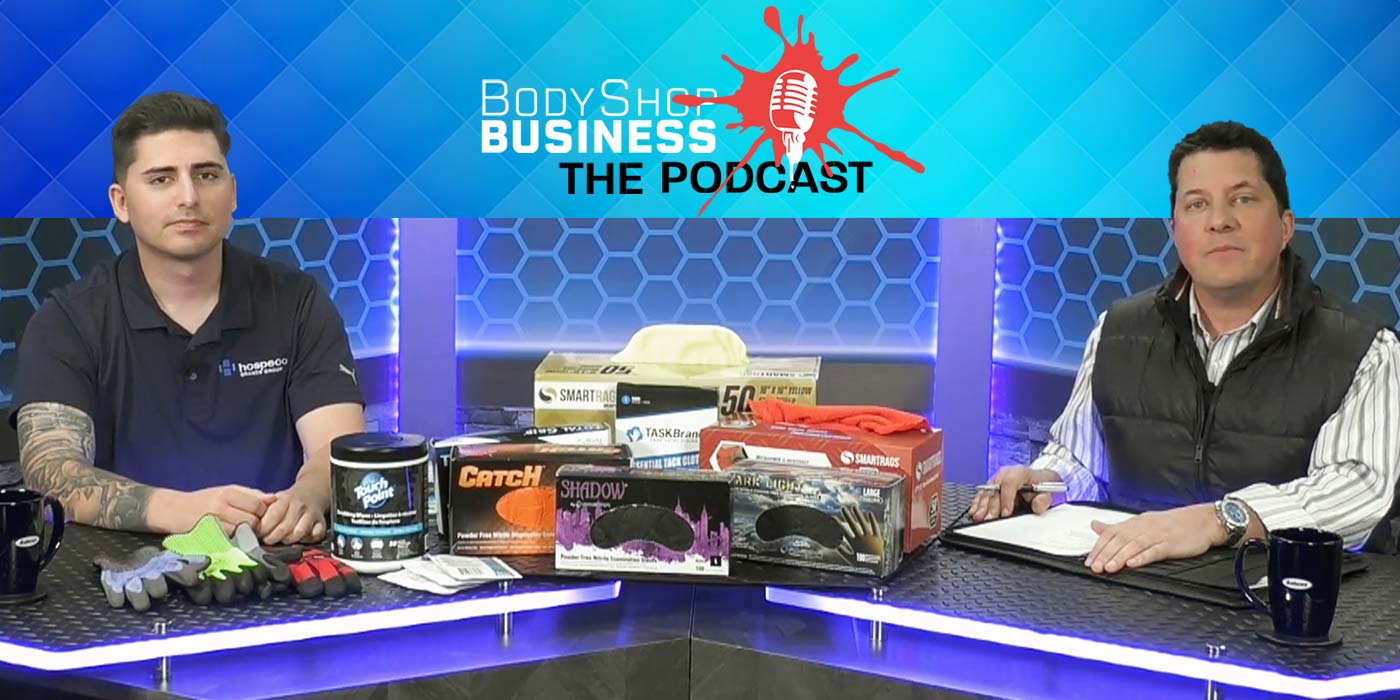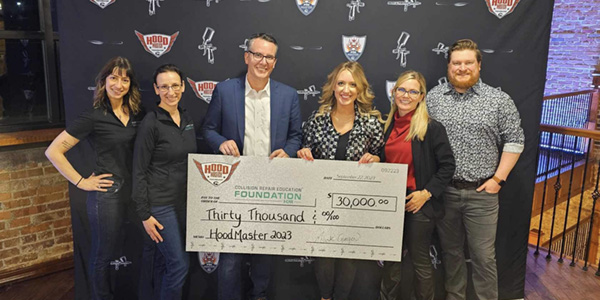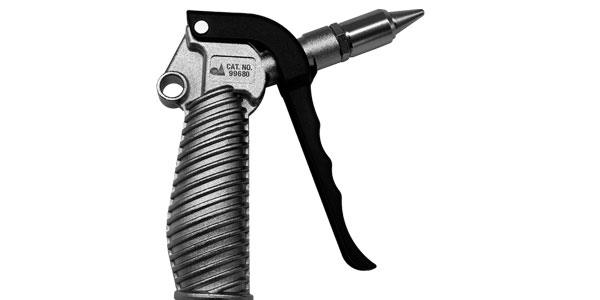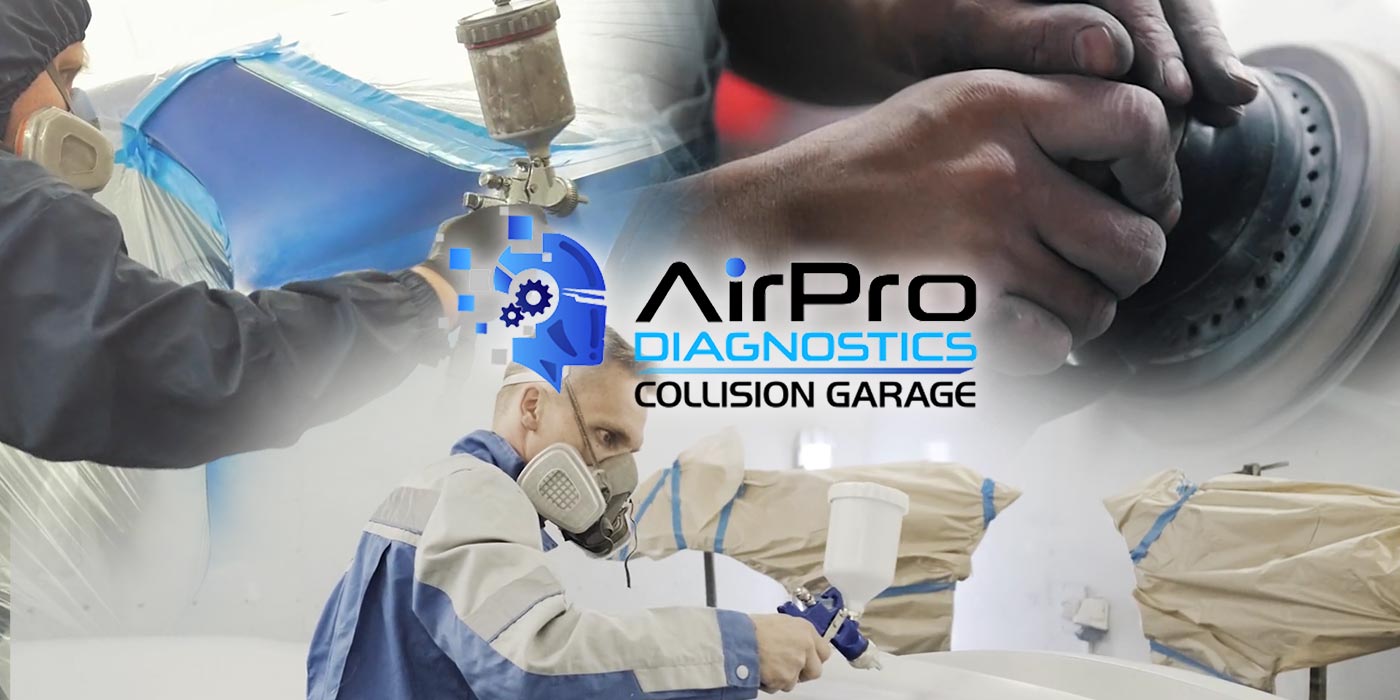Here’s the reason the use of waterborne paint will soon be mandated for shops in the South Coast Air Quality Management District (SCAQMD)of southern California: about 16 million people live in the 10,743 square miles that comprise that area. That many people and their cars create lots of air pollution, and consequently the area has some of the worst air quality in the U.S. Many environmental regulations for every possible source of pollution have already been mandated by the SCAQMD. Its early implementation and strict enforcement have made huge improvements in the fight for clean air.
Have its past regulatory efforts really made any difference? I’ll say! Since the 1950s, it has reduced the amount of ozone (which is primarily what smog is composed of) by two-thirds. During the same period, the SCAQMD population has grown threefold and the number of vehicles has quadrupled.
Most of the pollutants still come from internal combustion engines, but fully 12 percent have been determined to come from paints and solvents. Other SCAQMD industries that use paints and solvents have already been impacted. The furniture industry had to comply with similar low volatile organic compound (VOC) color coat regulations on July 1, 2006.
Different types and levels of air pollution can cause or contribute to everything from watery eyes and fatigue to respiratory disease, lung damage, cancer, birth defects and premature death. Because this area’s smog problem is so severe, SCAQMD often finds itself at the forefront of the nation’s emission reduction efforts.
How bad can it be? Roughly half the population of California lives in the SCAQMD. Many days the air is brown. Say what? First let me say that on a sunny day in the winter, when the winds have blown the pollution cloud out to sea or further inland, there are few nicer places to live. No wonder all my Midwestern friends moved out there — we had crippling ice storms this winter that left many homes without power for days, and the south coast folks enjoyed 70 degrees and sunshine on the nice days. However, on many days, the ozone that forms pollution makes their air so hazy that any view, toward any horizon, has visibly brown air between you and what you’re looking at. Like Jimmy Buffet sings, “I just spent four lonely days in a brown L.A. haze.”
Rule 1151
You’ll remember these SCAQMD folks from 1988, when they originally implemented Rule 1151. This was the one that mandated low VOC content and, as importantly, that anyone spraying anything within the SCAQMD must use spray equipment that has 65 percent or better transfer efficiency. The spray guns of choice to comply with that unprecedented rule were high volume, low pressure (HVLP). That technology, though mandated in only a few areas outside south California, has become our industry standard spray methodology. Even if your local air quality is good and no one is regulating you, less overspray means more paint on the car, less waste and lower shop costs for paint. The SCAQMD board effectively made HVLP an industry standard nationwide. Will the same thing happen with SCAQMD’s new amendments for even lower VOCs? Time will tell. For sure, those body shops within the SCAQMD must be using a paint system that complies with the more stringent VOC rules by next summer.
Rule 1151 has been amended effective July 1, 2008. Previous regulations allowed painters within the SCAQMD to comply by adding or stacking VOC emissions among a system of coatings. For example, under the old rules, the combination of base color and clearcoat couldn’t exceed 3.5 lbs. of VOC per gallon of paint. New rules will ultimately call for each component (primer, surfacer, sealer, color, clear, bedliner, etc.) to meet set VOC limits on its own.
On July 1, 2008, the first two product changes become effective. Clearcoat must not exceed 2.1 lbs. of VOC per gallon, and color coats must be below 3.5 lbs. of VOC. On January 1, 2009, and again on January 1, 2010, more refinish coatings must meet set limits. As many California shops can already attest, topcoat clear at only 2.1 lb. VOC can work great. To get the base color coat under the required 3.5-lb. VOC by itself, paint manufacturers must use some combination of exempt solvents, co-solvents
and water.
Exempt solvents (like acetone) aren’t counted in the VOC total because they are, hello, exempt. Meaning the Federal EPA has said they don’t contribute to the formation of ground -level ozone. The SCAQMD’s primary concern is that volatile, organic material be removed from paint coatings so that it can’t evaporate into the atmosphere and react with sunlight to form that noxious brown air. I interviewed a number of paint manufacturers for this story, and all of them have now, or soon will have, compliant color coatings available to their body shop customers. Clearly, they’ll all have less than 3.5 lbs. of VOCs in their versions. Some of them will have much less than 3.5 lbs. per gallon. The reason is because not everyone has the same approach to compliance. Some manufacturers even have patented technologies that they hope will make their compliant offering more desirable than their competitors’.
Chemical Construction
How each manufacturer chemically constructs its color coatings affects its products’ properties. Everyone I spoke with will employ some combination of co-solvents (works with water, acts similarly to current auto body solvent technology), exempt solvents (not counted in the VOC total) and/or treated, de-ionized water (no VOC by itself) to blend their compliant offerings. A lower VOC number means the product has fewer solvents to escape and become smog. Everyone I spoke with is under the 3.5-lb. limit with their waterborne* color coating; some are way under. The manufacturer of your current paint brand is surely working on its compliant offerings. As always, following the exact directions for your particular brand is the surest road to success with any auto paint finish.
*I had one manufacturer offer me a definition of “waterbase” paint as having no solvent and zero VOCs, and “waterborne” paint as using water as a reduction agent in conjunction with solvents. I couldn’t get other manufacturers to universally agree with these definitions and found during my research that paint company chemists use the terms waterbase and waterborne interchangeably.
Water-compatible resin has some issues in auto body that it doesn’t have in house paints. First, understand that this isn’t tap water in either case. The water the chemists want to use in paint is the purest possible: no minerals, filtered, purged, distilled, de-ionized and electrocuted. One auto body and water issue is that aluminum (metallic flake) and water can react to form hydrogen gas — not a good thing trapped in your paint film. Sophisticated chemistry allows the manufacturer to “wrap” the flake to prevent this. Another problem is that water is a one-speed solvent; the ability to switch to fast- or slow-evaporating solvents to accommodate changes in the local weather isn’t possible if your reducer is water. Unless the humidity exceeds 100 percent, water will evaporate at some point. Heat helps, along with lower humidity, but air movement appears to be most important to the evaporation process. Many current OEM paint applications employ water paint technology; however, the OEMs are able to control their spray environment more completely than the average body shop.
As an example of the difference in effect between heat and air movement, one manufacturer offered the following analogy: Your blue jeans are soaking wet from the washing machine, and you hang them on the outside clothesline. Will your pants dry faster on a sunny day or a windy day? Well? Wind makes the difference. Heat helps, but moving air is the key to getting any solvent, especially water, to evaporate quickly. Southern California shops will have to increase their air movement while keeping the heat up. One manufacturer told me they consider heat and its ability to crosslink resins as important as air movement in making their product work well. Good heat will certainly be required for all the 2.1-VOC clearcoats. What moving air and heat combination will be required for your brand to work best? Ask your jobber and your paint rep; they’ll know just what their particular chemistry requires.
Some pigments respond differently in water than they do in solvent-based resins. Some systems suspend pigments in a “micro gel” that resists settling, and some use tints much like their current solvent system but then add water in the final reduction. That method requires mechanical agitation just like mixing tints does now. Some other technologies require only a light hand agitation, where a simple rocking back and forth will suffice. If you whip the mixing tint too vigorously like a rattle can, you’ll whip air into the resin. Air and water together make foam, and a foamy resin doesn’t readily intermix with other components. You can wait for the foam (air) to settle out, but it’s better not to ignore the directions. In every case, some agitation is necessary for mixing tints; understand what your brand will require.
Manufacturers Taking Action
Water is susceptible to freezing in transport. The duration of the sub-freezing temperatures matters. One brand has calculated that their product is unaffected by a freeze of less than four hours. In some brands, this wouldn’t affect the product. In others, it would ruin it.
Several manufacturers intend to monitor the environments their product passes through on the way to the shop. By attaching a high/low peak thermometer to all their winter shipments, you could always record the lowest (and highest) temperature that pallet of product has been exposed to. Other telltale signs include ink capsules that break below freezing and even credit card-sized devices that check and record the temperature every 10 minutes and download the data via a USB port. Water-based paints can be affected by high temperatures, too. Temperatures over 120 degrees, at least in some brands, can cause problems with the resin. And yes, it will cost more to ship freezable resins in heated trucks, but not that
much more.
Everyone I spoke with is pricing their compliant product lines competitively. All agreed that the new stuff will likely be “comparable” in price to the old stuff. Having heard about the extraordinary expenditures the paint companies have already outlaid and will have to still outlay to help their shops comply, I’m thinking there’s going to be some R&D expenses they’re going to want to recover. Developing new resin bases, reformatting many color matching tools, conducting shop tests and training all adds to their cost of goods.
Everyone I interviewed had training classes to get their shop customers up to speed before the July 1, 2008 deadline. It’s expensive for the paint manufacturer to develop and present the training to shop painters, who will lose valuable production time away from work. However, everyone agrees that training painters to use the new technology is the single biggest key to success. Typical training agendas included mixing ratios, how to handle and store, shelf life (typically much shorter than solvent paints), spray techniques and waste management.
One technique change that was mentioned to me several times was how to get the best color match and best distribute the reflectants (flake and mica). Apparently, a final metallic control coat is required, which is accomplished by lowering the air pressure, setting a wide pattern and applying a light coat — if that’s what your brand suggests. Light coats may be a good idea with some brands, but at least one brand calls for wet on wet coats. If you trap the water in the first thick coat of color, the water will work its way out and is likely to show up as a cloud in the clearcoat. Just like dieback hazed the clear when the solvent seeped out in the old days, the trapped moisture can react with the isocyanate clear to form a white film when the water seeps out. Make sure to follow your brand’s directions to avoid problems.
Changes in the Shop
Cleaning waterborne paints from spray guns is an issue. Almost everyone is adamant that the painter needs to clean the gun as soon as possible after painting is completed. One manufacturer suggested tearing down the gun completely much more often than it’s done now. In some cases, with some brands, if you let the paint dry and set inside the spray gun, it can be very difficult to remove. Why? Because the dry film is impervious to solvent (it’s water-based), sticks to metal gun parts better than solvent base and is no longer very water soluble. Every manufacturer will sell or recommend a particular cleaning solution for their resin that’s likely to be some combination of distilled, de-ionized water, detergent, antibacterial additives (to reduce the moldy smell), surfactants (wetting agents) and co-solvents.
Shops will need to keep the waste stream separate from their solvent waste, too. (All the other coatings are still solvent-based.) Any shop that’s permitted by the EPA to generate waste won’t need another permit for waterborne. But the hauler, who’s permitted to transport the hazardous waste to a permitted TSD (Treatment, Storage & Disposal) facility, may charge more to remove water-based waste. The reason is because it won’t have the same BTU content when burned as fuel, which is what happens to much of our current solvent-based waste. One paint manufacturer has a method to separate their pigments and talcs from the waste liquid resin, reuse the resin as a cleaner and dispose of a solid waste puck.
Equipment requirements are similar from brand to brand but still require expert individual advice from your vendor. In general, the water resins require a dedicated spray gun that doesn’t shoot solvent-based anything. That gun will have to have stainless steel or plastic parts to prevent rust. Some manufacturers are suggesting a move to even smaller fluid tips; others are suggesting a change in air caps. Water resins atomize, flow and spray somewhat differently than solvent resins, so specially-designed air caps and correct fluid tips should help get the best results.
Compressed air will have to be maintained much better in many shops, since moisture in compressed air lines will affect water resins’ dry times, finish quality and even durability. A desiccant dryer, refrigerated air dryer, and clean and functioning moisture traps will be needed to make the new paints work well. Another minor but necessary change will be a switch to nylon paint strainers (or someone’s waterproof mixing cup system) since regular strainers are held together with water-based glue, which will dissolve.
Bombarding the waterborne color coat with lots of moving air will make it dry faster. Some shops are investigating a booth retrofit for $7,000 to $40,000 that will consist of a big fan in each corner or air jets mounted all around the car. Other shops intend to succeed with just a bigger air compressor and hand-held air vortex guns. These venturis, either pistol grip or mounted on a multi-holder stand, increase the volume of air by pulling in ambient air when the compressed air rushes through the funnel.
European auto painters have used waterborne paints for almost 10 years with minimum modification to their spray booths. One paint manufacturer suggested doubling the current air movement in the booth, typically 75 to 100 feet per minute, to make its product work best. What will be required for your brand? Attend the training, ask your vendor and you’ll know exactly what the requirements will be. The shops I spoke with used the hand-held air blasters without a problem, and the water resins looked nice. Clearer resin makes color chroma (intensity/brightness) better, and water tends to be a very clear resin system.
Other changes that might need to be made in the paint shop include increasing the quality of the prep work. If it’s true that the opacity (ability to hide) is higher in these new paints, then you’ll need to reach color and appearance match with less material. One manufacturer suggested that its product was correct at between .7 to 1.2 mils on solvent color but looked as good with only .5 to .7 mil of waterborne color. If so, painters will have to learn to mix less (it’s a waste of money if you mix it up and throw it away) and do better surface prep — such as sanding with finer grits if the paint isn’t as thick.
What Happens to the Old Stuff?
Rule 1151 gives the shops within its control the option to continue to use old solvent-based material that was manufactured before July 1, 2008, with the date of manufacture clearly noted on the can. They have until December 31, 2008, to use up as much of the non-compliant material as possible. As of January 1, 2009, the end user is not to possess or use the old coatings or else a compliance action could be taken by the SCAQMD. A fine is one of those actions. Like any document involving lawyers, there are exceptions. If the shop has an approved emission control system in place, they could still use the solvent material. Other exceptions are indicated in Appendix A, subdivisions (e) and (i) of Rule 1151. Virtually every body shop in the SCAQMD will be using water color in some form.
How much will it cost to dispose of the remaining solvent material after December 31, 2008? Assuming the shop made a legitimate effort to use up as much of the old stuff as possible, they’d still be left with a mixing bank of half-full cans of tint. By one manufacturer’s count, there’d be about 15 gallons of tint on the average, or one-half full agitator bank.
Current waste disposal cost for solvent waste is around $200 to $250 per drum nationally. Fifteen gallons times a $4.55 per gallon disposal fee equals $68.25 to legally dispose of all the old tints. Not a big deal.
Who paid for the old tints is liable to be an issue. The body shop is likely to say they bought them, just look at the $70 I spent last month for this one quart of tint. The jobber and paint manufacturer are liable to feel they bought the tints in the first place, just look at the $5,000 we spent three years ago when we put in the mixing system. At least one paint manufacturer has a very cool package that swaps out old for new and includes some air movement tools, too. Just don’t be an unreasonable customer; remember that all three parties, the shop, the jobber and the paint company, have a financial stake in conforming to Rule 1151. I’m confident it’ll all be resolved equitably if everyone keeps their head.
|
THEY SAID IT
“Keyes Collision Center was excited to be one of the first shops in California to employ the new waterborne basecoat technology. We have enjoyed a painless transition to a product that provides a better color and texture match to domestic, Japanese and German OEM finishes. The training class provided accurate information, and we’re pleased to use a product that provides a healthier environment for both our painters and our neighbors. Working with the new material has been very rewarding. I predict similar results for all shops in the SCAQMD.”
“We have been exceptionally impressed with the waterborne brand we’ve tested. In both high-speed production shops and individual spot repairs, the product works great. I’ve put aside my initial fears about waterborne based on our product tests in an everyday, real world shop environment. Our customers should have no problem converting.” |
How Far Will It Go?
Will this technology reach you, wherever your shop is? HVLP spray guns did. While mandated for only a few areas, the merit in less overspray worked for everyone. When I started writing this story, I thought it was unlikely that this technology would soon spread across the country. Now I’m not so sure it won’t. In California alone, other AQMDs (Air Quality Management Districts) either have or soon will have rules similar to the South Coast rule. San Joaquin’s goes into effect January 1, 2009; San Diego, Sacramento, Santa Barbara and the Bay Area are likely to implement the same lower VOC limits by 2010. Canada has plans to require similar limits in 2010. Not all of the EU (European Union) requires water; thresholds are different in every European country, and certainly none are measured in pounds per gallon! The United Kingdom went to limits that require water resins on January 1 of this year. Spain, Germany, Belgium and the Netherlands have successfully used similar low VOC coatings for several years.
Populated and potentially polluted areas like the northeastern United States, the industrial states that surround the Great Lakes and other heavily populated areas are likely to become “greener,” and the SCAQMD regulations will likely become their model legislation. At some point, if enough of the U.S. population is regulated by low VOC requirements, the paint companies and jobbers will opt to carry and promote one paint line. And it’s likely to contain some water.
What’s the good news? These new finishes are better for the environment and could potentially provide a healthier workplace. Plus, color match appears to be more than acceptable. But here’s what you’re going to need:
- More CFM air volume and cleaner compressed air;
- A new spray gun with rustproof parts and specific fluid tips and air caps;
- Some method to blast a bunch of air at the car to dry the film;
- A new gun washer with special cleaning solvent in it;
- Some training on mixing ratios and agitation requirements; and most importantly,
- A willingness to change.
I predict great success. Our industry has proven time and again that no matter what the change, driven by the DOT, EPA, OSHA or any other scary government acronym, our techs can and will figure it out. Low VOC color coatings will be no exception. It’ll take a little while; any product switch in an auto body paint shop is likely to cause an initial decrease in production. You knew all the shortcuts with the old stuff, but it’ll take awhile to uncover the shortcuts with the new stuff. I remember when naysayers moaned about HVLP spray guns, saying they’d never work because you couldn’t blast apart the paint at high pressure. Guess what? After a short learning curve, they work great for almost every shop. I’ll wager that by July 1, 2009, the shops in the SCAQMD will be turning out great-looking work in a hurry, with a product that helps keep brown air at bay.
Writer Mark Clark, owner of Professional PBE Systems in Waterloo, Iowa, is a well-known industry speaker and consultant. He’s been a contributing editor to BodyShop Business since 1988.













